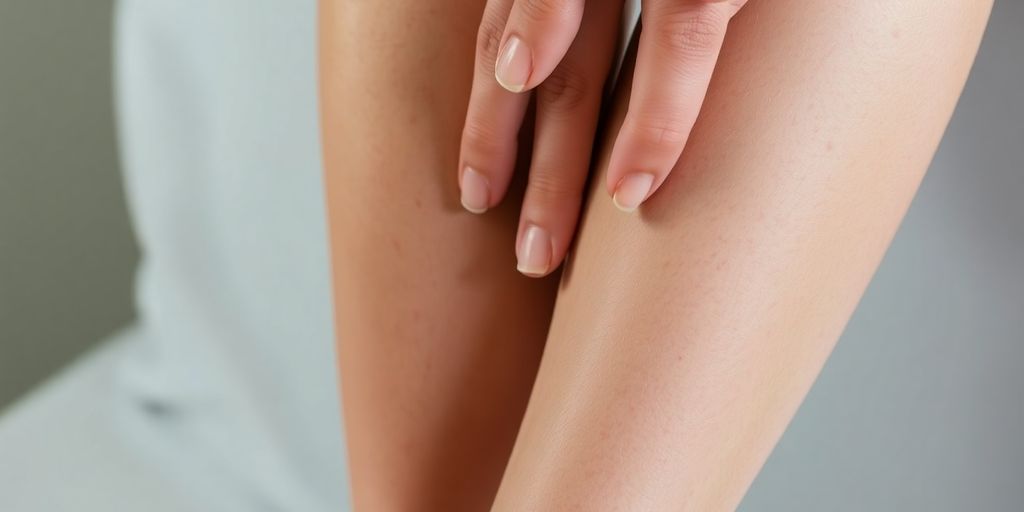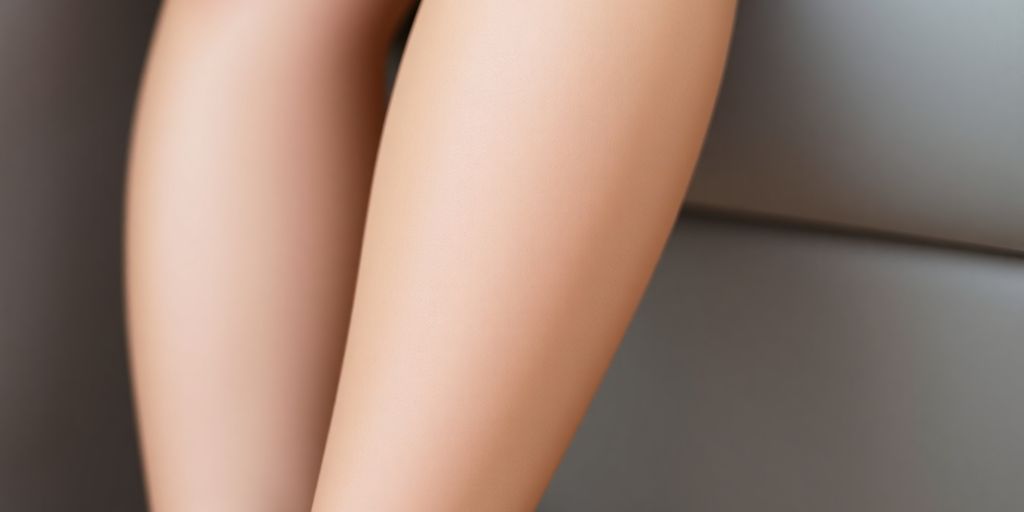Chronic Venous Insufficiency (CVI) can be a real pain, literally. It happens when the veins in your legs have trouble sending blood back up to your heart. This can cause all sorts of uncomfortable problems. Lots of people have CVI, but it often gets missed because the early signs seem like other everyday stuff, like just being tired. If your legs hurt, swell up, cramp, or feel restless, especially after you've been sitting or standing for a while, you should probably talk to a doctor. These things can point to a vein issue. This guide will walk you through everything about CVI, from what it is to how to get some relief.
Key Takeaways
- Knowing the early signs of CVI helps you get help sooner, which is good for your long-term comfort.
- Simple things like wearing compression stockings and staying active can make a big difference in managing CVI symptoms.
- There are lots of ways to treat CVI, from small procedures to bigger surgeries, depending on what you need.
- A good treatment plan looks at why you have CVI, not just the symptoms, and it's made just for you.
- Finding a good vein doctor, especially one who is board-certified, is a big step toward getting lasting relief from CVI.
Understanding Chronic Venous Insufficiency
Defining Chronic Venous Insufficiency
Okay, so what exactly is chronic venous insufficiency (CVI)? Basically, it's what happens when the veins in your legs have trouble sending blood back up to your heart. Healthy veins have one-way valves that keep blood flowing in the right direction. With CVI, these valves get damaged or weakened. This causes blood to pool in your legs, leading to all sorts of problems. It's a pretty common condition, but a lot of people don't realize they have it.
Think of your veins like a highway system. Normally, traffic flows smoothly (blood goes up to the heart). But with CVI, there's a major traffic jam in the legs. This backup causes pressure and swelling, which leads to discomfort and other issues.
Common Symptoms of Venous Insufficiency
So, how do you know if you might have CVI? The symptoms can vary, but here are some of the most common ones:
- Aching or heavy feeling in your legs
- Swelling, especially in your ankles and feet
- Leg pain that gets worse when you stand and better when you raise your legs
- Skin changes, like discoloration or thickening
- Varicose veins or spider veins
It's easy to brush these off as just being tired or getting older, but if you're experiencing them regularly, it's worth getting checked out. These symptoms of venous insufficiency can really impact your day-to-day life.
Why Early Diagnosis Matters for Chronic Venous Insufficiency Relief
Why is it so important to catch CVI early? Well, the sooner you know you have it, the sooner you can start managing it. Left untreated, CVI can lead to some serious complications, like:
- Skin ulcers (sores that are slow to heal)
- Blood clots
- Chronic pain
Plus, early treatment can help prevent the condition from getting worse. Simple things like wearing compression stockings and making lifestyle changes can make a big difference. Finding lasting CVI relief is much easier when you address the problem early on. The longer you wait, the more damage can occur, and the more aggressive the treatment might need to be. So, don't ignore those leg symptoms!
Lifestyle Adjustments for Chronic Venous Insufficiency Relief
It turns out that managing chronic venous insufficiency (CVI) isn't just about medical procedures; what you do every day really matters. Small changes to your lifestyle can make a big difference in easing symptoms and improving your overall vein health. It's about finding a balance that works for you and sticking with it.
The Role of Compression Stockings in Managing CVI
Okay, so compression therapy is a big deal when it comes to CVI. Think of compression stockings as a gentle hug for your legs. They help squeeze your veins, which encourages blood to flow back up to your heart instead of pooling in your legs. This can reduce swelling, aching, and that heavy feeling you might get.
- Different levels of compression exist, so it's best to talk to a doctor to figure out what's right for you.
- Put them on first thing in the morning, before your legs have a chance to swell.
- Make sure they fit properly; too tight, and they'll be uncomfortable; too loose, and they won't do their job.
Staying Active to Improve Venous Health
Getting moving is super important. Even if you don't feel like it, regular exercise can really help your veins. When you're active, your calf muscles act like a pump, squeezing the veins in your legs and pushing blood back up to your heart. This improves circulation and reduces the pressure in your veins.
- Aim for at least 30 minutes of moderate exercise most days of the week. Walking, swimming, and cycling are all great options.
- If you sit for long periods, take breaks to stand up and walk around every 30 minutes.
- Try simple exercises like calf raises or ankle rotations while you're sitting or standing.
Dietary Considerations for Chronic Venous Insufficiency Relief
What you eat can also play a role in managing CVI. There's no magic diet, but focusing on certain foods and avoiding others can make a difference. It's all about supporting healthy circulation and reducing inflammation.
- Eat a diet rich in fruits, vegetables, and whole grains. These foods are packed with nutrients that support vascular health.
- Limit your intake of processed foods, sugary drinks, and excessive salt. These can contribute to inflammation and fluid retention.
- Stay hydrated by drinking plenty of water throughout the day. This helps keep your blood flowing smoothly.
Making these lifestyle changes might seem small, but they can add up to significant improvements in your CVI symptoms. It's about finding what works for you and making it a part of your daily routine. Remember, it's a marathon, not a sprint, so be patient with yourself and celebrate your progress along the way.
Advanced Treatment Options for Chronic Venous Insufficiency Relief

For many years, surgery was the main option for dealing with chronic venous insufficiency (CVI). But things have changed! Now, there are several less invasive ways to get relief. These treatments usually mean less pain, quicker recovery, and smaller scars. It's a big win for anyone dealing with CVI.
Minimally Invasive Procedures for CVI
Minimally invasive procedures have really changed how we treat CVI. These procedures usually involve smaller incisions (or none at all!) and can often be done in a doctor's office. This means less downtime and a quicker return to your normal life. Here are a few common options:
- Endovenous Laser Ablation (EVLA): Uses heat to close off the affected vein.
- Radiofrequency Ablation (RFA): Similar to EVLA, but uses radiofrequency energy.
- Venaseal: Uses a special medical adhesive to close the vein.
These procedures are generally very effective and have a lower risk of complications compared to traditional surgery. If you're exploring varicose vein treatments, these options are definitely worth considering.
Exploring Sclerotherapy and Laser Therapy
Sclerotherapy and laser therapy are two other popular options for treating CVI, especially for smaller veins or spider veins. Sclerotherapy involves injecting a solution directly into the affected vein, which causes it to collapse and fade away. Laser therapy, on the other hand, uses focused light to achieve a similar result.
Here's a quick comparison:
| Treatment | Best For | How It Works |
|---|---|---|
| Sclerotherapy | Small varicose veins, spider veins | Injection of a solution to collapse the vein |
| Laser Therapy | Spider veins, small surface varicose veins | Focused light energy to damage and close the vein |
Both treatments are usually quick and can be done in a doctor's office with minimal discomfort. They're great for addressing those visible signs of venous insufficiency that can be bothersome.
When to Consider Surgical Interventions for Chronic Venous Insufficiency
While minimally invasive procedures are now the go-to for most CVI cases, there are still times when surgery might be the best option. This is usually when the condition is severe, or other treatments haven't worked. Surgical options might include vein stripping or bypass surgery. These are more involved procedures that require a longer recovery period. It's important to have a thorough discussion with your doctor to determine if surgery is the right choice for you. They can assess your specific situation and explain the risks and benefits of each option. Remember, the goal is to find the right vein specialist who can provide lasting relief.
The Benefits of Comprehensive Treatment Plans for Chronic Venous Insufficiency Relief
Addressing Underlying Causes of CVI
Individual treatments can sometimes miss the bigger picture. They might fix the visible problem, like those pesky varicose veins, but not deal with what's causing them in the first place. A comprehensive plan aims to tackle the root cause of your chronic venous insufficiency (CVI). This approach can really cut down on the chances of the problem coming back, especially if you also make some important lifestyle changes.
Tailored Treatment Approaches for Individual Needs
Everyone's different, and so is their CVI. What works for your neighbor might not work for you. A good treatment plan is designed just for you, taking into account things like your age, overall health, and medical history. This way, you get the care that's best suited to your specific situation. Think of it like getting a custom-made suit instead of something off the rack. It just fits better.
Integrating Lifestyle Changes with Medical Treatments
Treating CVI isn't just about medical procedures; it's also about how you live your life. A comprehensive plan often includes advice on things like diet and exercise. For example:
- Regular exercise to boost blood flow.
- Wearing compression socks to support your veins.
- Eating a balanced diet to maintain a healthy weight.
Making these changes can really improve the effectiveness of medical treatments and help you feel better overall. It's about taking control of your health and making choices that support your veins. It's not always easy, but it's worth it in the long run. Regular follow-up appointments are also important to ensure long-term success.
By combining medical treatments with positive lifestyle adjustments, you're giving yourself the best chance for lasting relief from CVI.
Finding the Right Vein Specialist for Chronic Venous Insufficiency Relief

Finding the right doctor is a big deal, especially when you're dealing with something like Chronic Venous Insufficiency (CVI). It's not just about finding someone who can treat your symptoms; it's about finding someone who understands your specific situation and can create a plan that works for you. It can feel overwhelming, but knowing what to look for can make the process a lot easier.
Qualities of an Experienced Vein Doctor
When you're looking for a vein doctor, experience really matters. You want someone who has seen a lot of cases like yours and knows the ins and outs of the different treatment options. Here's what I'd look for:
- Years in Practice: How long have they been treating vein issues?
- Specific CVI Experience: Do they specialize in CVI, or is it just one of many things they treat?
- Success Rates: What are their success rates with different procedures? Don't be afraid to ask for data.
Finding a doctor who is up-to-date on the latest research and techniques is also important. Medicine is always changing, and you want someone who is committed to learning and improving.
Importance of Board-Certified Specialists
Board certification is a big deal. It means the doctor has met certain standards of education, training, and skill. It's like a stamp of approval that tells you they know what they're doing. Always check to see if a doctor is board-certified in vascular medicine or a related field. You can usually find this information on their website or by asking their office.
Scheduling Your Initial Consultation for CVI
Okay, you've done your research and found a few doctors who seem promising. Now what? It's time to schedule a consultation. This is your chance to meet the doctor, ask questions, and see if you feel comfortable with them. Here are some things to keep in mind:
- Prepare Questions: Write down a list of questions beforehand so you don't forget anything.
- Bring Medical Records: Gather any relevant medical records, like previous test results or doctor's notes.
- Be Honest About Symptoms: Don't hold back about your symptoms, even if they're embarrassing. The more information you give the doctor, the better they can help you.
| Topic | Questions to Ask | the initial consultation is a good time to ask questions. Don't be afraid to ask about the doctor's experience, their approach to treatment, and what you can expect during and after the procedure. It's also a good idea to ask about the risks and benefits of different treatment options.
Finding the right vein specialist can make a huge difference in your journey to CVI relief. Take your time, do your research, and don't be afraid to ask questions. Your health is worth it!
Long-Term Management and Prevention of Chronic Venous Insufficiency
Chronic Venous Insufficiency (CVI) is a condition that needs ongoing attention, even after initial treatments. It's not just about fixing the problem; it's about keeping it from coming back and maintaining good vascular health. Think of it like this: you've patched a hole, now you need to reinforce the wall.
Regular Follow-Up Appointments for Sustained Relief
After your initial treatment, regular check-ups with your vein specialist are super important. These appointments aren't just a formality; they're a chance to monitor your progress, catch any potential issues early, and adjust your treatment plan if needed. The frequency of these visits will depend on your specific situation, but they're key to sustained relief.
Preventing Recurrence of Venous Insufficiency Symptoms
Preventing CVI symptoms from returning involves a mix of lifestyle changes and ongoing care. It's about making choices that support healthy veins every day. Here's a few things you can do:
- Compression Stockings: Keep wearing them as recommended by your doctor. They help improve blood flow in your legs.
- Stay Active: Regular exercise, especially walking and swimming, can strengthen your leg muscles and improve circulation.
- Maintain a Healthy Weight: Extra weight puts more pressure on your veins, so keeping a healthy weight can help prevent problems.
Making these changes can really help keep those pesky symptoms at bay. It's all about being proactive and taking care of your veins.
Maintaining Overall Vascular Health
Taking care of your veins is part of taking care of your whole body. Here's how to keep your vascular system in tip-top shape:
- Eat a Healthy Diet: Focus on fruits, vegetables, and whole grains. Limit processed foods, salt, and saturated fats.
- Stay Hydrated: Drinking enough water helps keep your blood flowing smoothly.
- Quit Smoking: Smoking damages blood vessels and increases your risk of vascular problems.
Remember, managing CVI is a marathon, not a sprint. It requires a long-term commitment to healthy habits and regular medical care. By working closely with your vein specialist and making smart lifestyle choices, you can enjoy lasting relief and maintain good vascular health for years to come.
Finding Your Way to Better Vein Health
So, there you have it. Dealing with chronic venous insufficiency can feel like a lot, but it's really about taking things one step at a time. Remember, knowing what's going on with your veins is the first big step. Then, it's about making some smart choices, like moving around more and maybe wearing those compression stockings. And don't forget, there are good doctors out there who can help with treatments that actually work. You don't have to just live with the discomfort. Getting help can make a real difference in how you feel every day. It's about getting back to doing the stuff you love without your legs holding you back.
Frequently Asked Questions
What exactly is Chronic Venous Insufficiency (CVI)?
CVI happens when the veins in your legs have trouble sending blood back to your heart. This can cause blood to pool in your legs, leading to various issues. It's a common problem that many people have.
What are the usual signs of CVI?
You might notice swelling in your legs, especially around your ankles, a feeling of heaviness or tiredness in your legs, aching, itching, or even skin changes like discoloration. Some people also get varicose veins, which are twisted, bulging veins.
Why is it important to get CVI checked out quickly?
It's really important to catch CVI early because if left untreated, it can get worse. This could lead to more serious problems like skin ulcers that are hard to heal, or even blood clots. Getting help early can stop these bigger issues from happening.
Can I do anything at home to help with CVI?
Yes, things like wearing special compression stockings, staying active, and eating a healthy diet can make a big difference. These steps help your blood flow better and can ease your symptoms.
What kinds of medical treatments are there for CVI?
Doctors can offer different treatments, from simple procedures that close off damaged veins to more involved surgeries for severe cases. The best option depends on how bad your CVI is.
How do I find the right doctor for my CVI?
Look for a doctor who specializes in veins and is board-certified. This means they have special training and experience. It’s a good idea to schedule an initial visit to talk about your symptoms and what treatment might be best for you.




Share:
The Ultimate Guide to Choosing Compression Socks for Flying
How Do I Know What Size Compression Socks to Get? A Definitive Guide